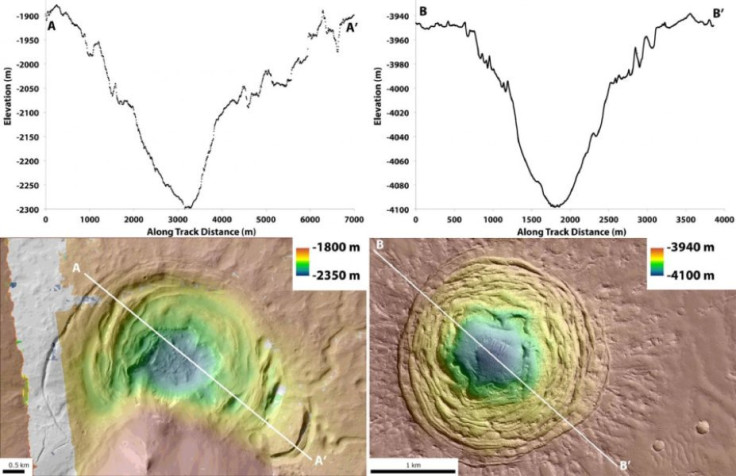A volcano underneath a glacier on Mars could be next place to look for life on Red Planet
The unique landform could have led to liquid water in a depression in the Hellas region of Mars.

A funnel-shaped depression on Mars has been identified as a potential site to search for signs of life on the Red Planet.
It's thought to have been formed by a volcano underneath a glacier, the researchers say. This unusual layout could have created a warm and chemically diverse environment, which would make it a good candidate for the search for life on Mars.
The research is published in the journal Icarus.
"We were drawn to this site because it looked like it could host some of the key ingredients for habitability – water, heat and nutrients," says study co-author Joseph Levy of the University of Texas's Institute for Geophysics.
Levy was struck by the similarity of the landscape at these sites and ice cauldron – volcanoes underneath glaciers – found on Earth in Iceland and Greenland.
"These landforms caught our eye because they're weird looking," says Levy. "They're concentrically fractured so they look like a bullseye. That can be a very diagnostic pattern you see in Earth materials."

Levy first saw the concentric circles on images from NASA's Mars Reconnaissance Orbiter. Using stereoscopic images – which give an idea of the three-dimensional shape of the landform – Levy was able to characterise the sites more closely.
"The big contribution of the study was that we were able to measure not just their shape and appearance, but also how much material was lost to form the depressions. That 3D view lets us test this idea of volcanic or impact," Levy said.
Studying two funnel-shaped sites, Levy and his colleagues found that they were most likely formed by different processes. Debris found around one site – the Galaxias Fossae depression – suggested it was formed from impact from an object from space. A second depression, in a crater on the rim of the Hellas basin, was more likely caused by volcanic activity.
This would make the Hellas site the more likely place for life to take hold, as an area that could have liquid water, Levy says.
Gro Pedersen, a volcanologist at the University of Iceland, says that the depressions are an interesting find. "These features do really resemble ice cauldrons known from Earth, and just from that perspective they should be of great interest," Pedersen says. "Both because their existence may provide information on the properties of subsurface material – the potential existence of ice – and because of the potential for revealing ice-volcano interactions."

© Copyright IBTimes 2025. All rights reserved.






















